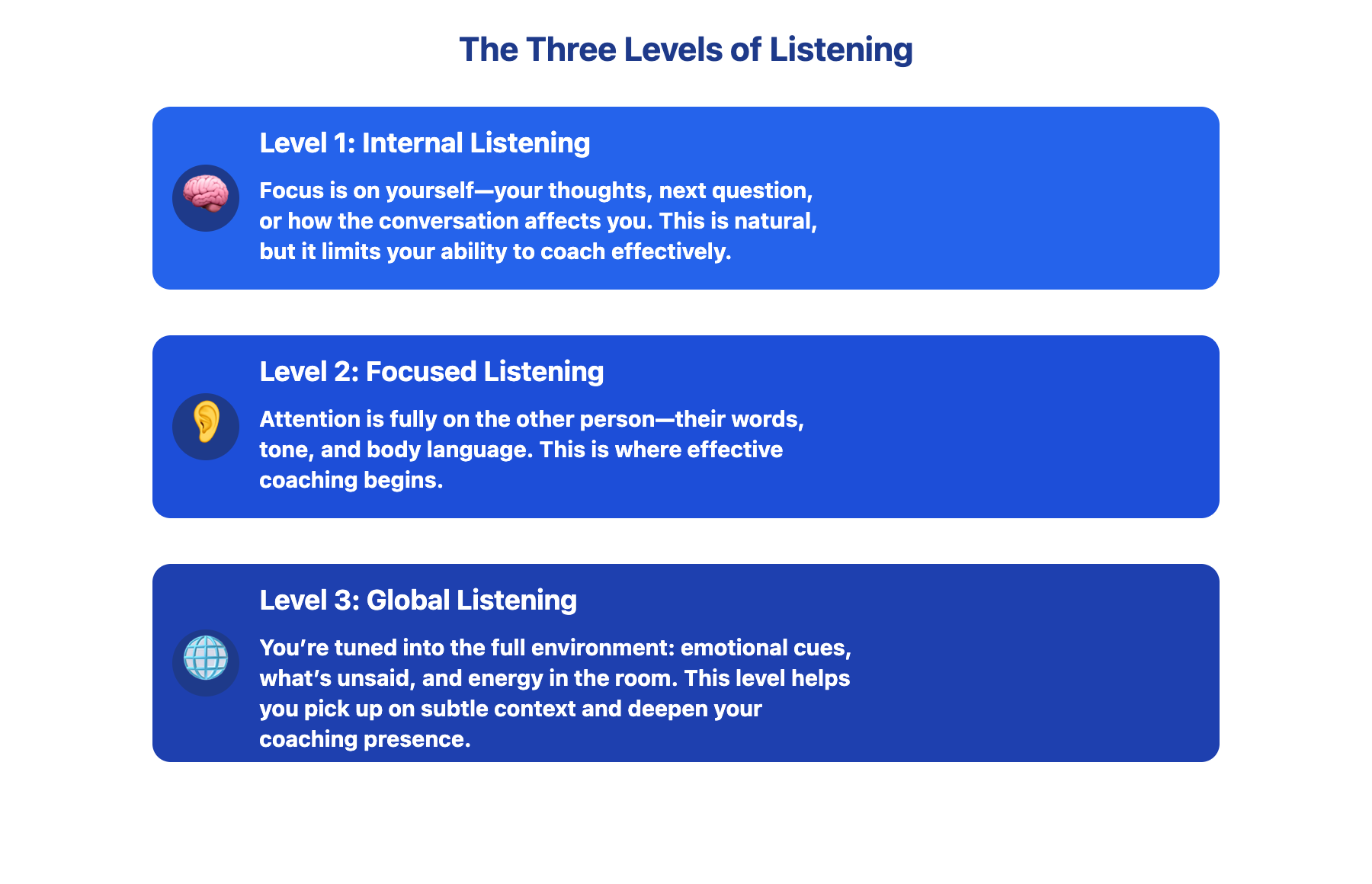As a first-time people manager, you may find yourself eager to help, quick to offer solutions, or unsure how to respond when a team member shares a challenge. But one of the most valuable skills you can develop is learning to truly listen—not just to the words, but to the meaning, emotion, and intent behind them. Listening to coach means using your attention and curiosity to help your team members feel understood and empowered, rather than simply heard or advised. This lesson introduces practical frameworks and techniques to help you build this foundational management skill.
When you’re new to managing people, it’s easy to focus on your own thoughts or on what you’ll say next. The “Three Levels of Listening” framework helps you become more aware of where your attention is during a conversation:

As a new manager, it’s common to start at Level 1, where your focus is on your own thoughts or what you’ll say next. To coach effectively, aim to move into Level 2, where you’re fully present with your team member, noticing not just their words but also their tone and body language. The most impactful coaching happens at Level 3, where you’re aware of the bigger picture: the mood, unspoken feelings, and the overall energy in the conversation. Use this framework to check in with yourself and intentionally shift to deeper levels of listening as you coach your team.
Your goal is to move beyond Level 1 and spend more time in Levels 2 and 3. This shift allows you to notice when a team member’s words don’t match their feelings, or when something important is left unsaid.
Technique: During your next one-on-one, pause and ask yourself, “What am I noticing beyond their words?” This simple check-in helps you listen more deeply and respond more thoughtfully.
Here’s a sample dialogue that demonstrates these skills in action:
- Jessica: Hey Chris, you seemed a bit quiet in the meeting today. Is everything okay?
- Chris: Yeah, I’m fine. Just a lot on my mind, I guess.
- Jessica: I noticed you hesitated before sharing your update. If there’s something you want to talk through, I’m here to listen.
- Chris: Well, I’m a little frustrated about how the project is going, but I didn’t want to make a big deal out of it.
- Jessica: Thanks for sharing that. It sounds like you’re carrying a lot. What’s been most challenging for you lately?
In this exchange, Jessica listens beyond Chris’s initial words, notices his hesitation, and gently invites him to share more. She validates his feelings and opens the door for a deeper conversation.
As a new manager, you might feel pressure to have all the answers. But coaching is about helping your team develop their own solutions and confidence. Instead of immediately offering advice, use these techniques:
- Reflect and Validate: Show you’re listening by summarizing what you’ve heard and acknowledging their feelings.
Example: “It sounds like you’re frustrated with how the project is going.” - Ask Open Questions: Encourage your team member to think through their situation.
Example: “What options have you considered so far?” - Hold Space: Sometimes, your presence and attention are enough. Silence can give your team member space to process and share more.
Technique: Before you respond, ask yourself, “Am I trying to fix, or am I helping them think it through?” This helps you stay in a coaching mindset and support your team’s growth.
